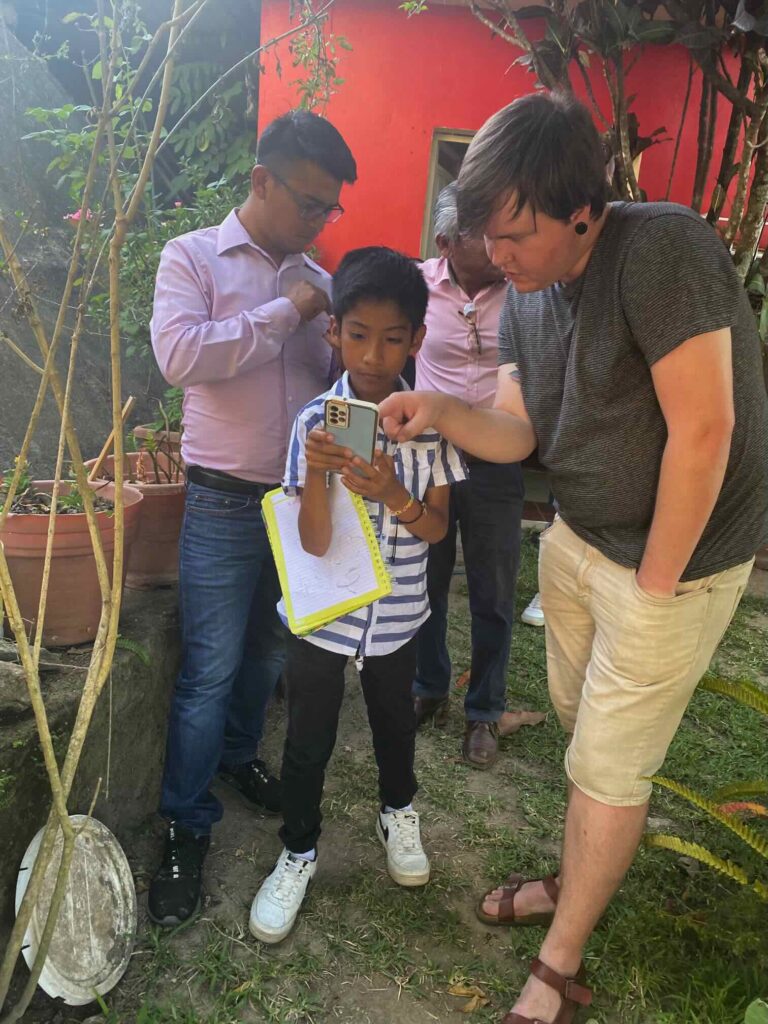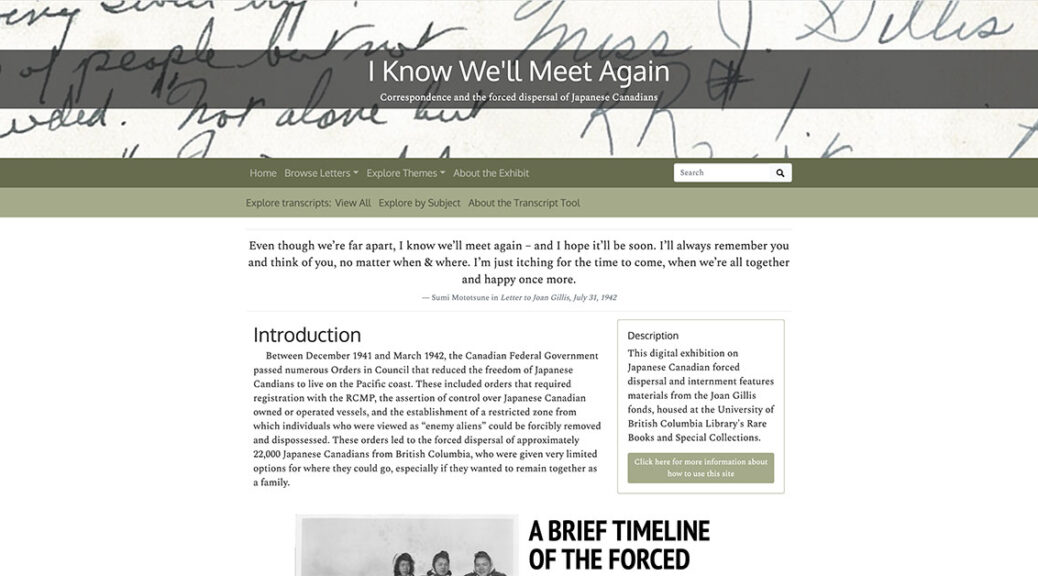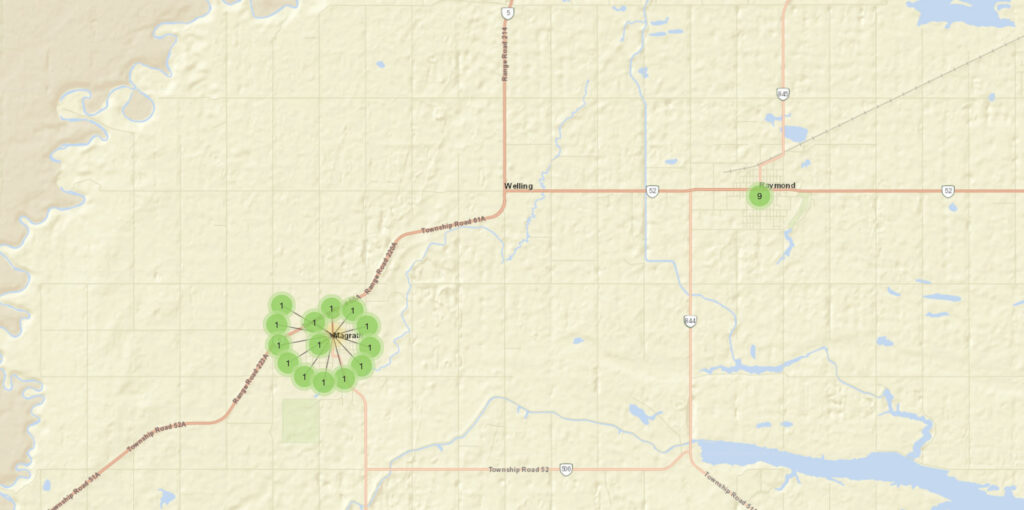BY EDEN EWING
When I arrived in San Marcos Zacatepec in rural Oaxaca, it was dark outside. A kind Chatino-speaking woman cooked me food: chicken soup with homemade tortillas. Dr. Anthony Woodbury from the UT Department of Linguistics and I had been traveling since early that morning, first arriving in Mexico City from Austin and then Puerto Escondido after a several-hour layover. We had to take a bus for several more hours to get to San Marcos Zacatepec, a town in the Sierra Madre de Oaxaca mountains and the first I would visit during my trek. This was the setting for the community outreach and research work I would be undertaking during spring break.
The Chatino-speaking region of Oaxaca is breathtakingly beautiful. All three communities that I visited are nestled in the Sierra Madre del Sur mountain range. Zacatepec is at the lowest altitude of all the Chatino-speaking communities that I visited, so it can get fairly hot during the day. However, San Juan Quiahije, another Chatino community, is several thousand feet higher up the mountain—cooler during the day and quite cold at night.

I am a dual-degree master’s student in Latin American Studies and Information Studies at The University of Texas at Austin, working to become an academic librarian with a subject specialty in Latin American and Indigenous Studies. I had come to Oaxaca with a clear goal in mind: to teach several workshops on archival access and navigation for the Archive of the Indigenous Languages of Latin America (AILLA), a digital archive at the Nettie Lee Benson Latin American Collection. Dr. Susan Kung, AILLA’s coordinator, invited me to take part in a project with Dr. Emiliana Cruz, professor of anthropology at CIESAS–Mexico, and Dr. Anthony Woodbury, professor of linguistics at UT Austin. As part of the project, I spent my spring break in three Chatino-speaking villages: San Marcos Zacatepec, San Juan Quiahije, and San Miguel Panixtlahuaca. Several local language activists and teachers in the community wanted to be able to use the materials in AILLA to learn Chatino and listen to oral histories and stories in the language.
I agreed to go without hesitation, thrilled to participate in a project that brings together archivists, academics, and Indigenous community members around cultural materials represented in AILLA’s collections. I had hoped that, by getting access to these materials, Indigenous communities might be able to use them for projects related to the revitalization of their language and traditional cultural practices.
The Chatino Language Documentation Project is the subject of this 2015 article in Life & Letters magazine, which features reflections from several linguist researchers.
I soon learned that each town experienced different issues regarding their fluency in the Chatino language and ability to access AILLA. The vast majority of the population speaks a variant of Eastern Chatino, a language represented by several collections in the archive. San Marcos Zacatepec, however, differed significantly from the other two towns: For one, it is a very small village with poor internet access. Secondly, most of the community members no longer speak Chatino. There are only about 300 speakers left in the town and all of them are elderly. In contrast, the language proficiency is strong in both San Juan Quiahije and San Miguel Panixtlahuaca. While the primary issue in Zacatepec was access to the internet, there did appear to be a connection between a lack of ability to speak Chatino and the teachers having less interest in accessing the archive to find materials to use with schoolchildren.

Community Workshops & the Technology Gap
In total, I taught five workshops on how to access and navigate AILLA in various spaces for different audiences: one small-group workshop at a community member’s house and another at a middle school in San Marcos Zacatepec; one each at a middle and a high school in San Juan Quiahije; and a final one at a public library in San Miguel Panixtlahuaca. Two of the workshops were conducted by myself and the other three were conducted with Dr. Cruz.
Each workshop had its own dynamic. For the first workshop we conducted in San Marcos Zacatepec, we played a game during which an older speaker would say a word in Spanish and the children had to say the word in Chatino. Some of the kids actually knew more Chatino than I thought they did, but it still felt like older members of the community were more invested in what was happening than the children were. In addition, without an internet connection or access to a space for our projector, it was not possible to demonstrate the use of the archive.
The second workshop in San Marcos Zacatepec was held at a private home with a small group of people. This session included Christian, a ten-year-old who brought his Chatino de Panixtlahuaca writing workbooks with him. Everyone was serious about learning how to use the archive and engaged throughout the session. I even saw one person making a PowerPoint with AILLA instructions as I walked the group through how to register for an account and navigate the Chatino language collections.

Unexpectedly, the experience gave me insight on how to effectively organize workshops that connect communities to information resources, a key skill for any academic librarian. Although Dr. Cruz was with me at the middle school in San Juan Quiahije, I taught the workshop at the high school there by myself. This meant coordinating a session with around 40 high school students by myself. This was the first time I had taught a workshop to such a large group of people. It was challenging and I was a little nervous, but the experience was exactly what I needed to become a better information professional.
One issue that became glaringly clear was that technological requirements can be a huge barrier to access for rural Global South communities. In the middle school in San Marcos Zacatepec, there was no internet, so we were not able to actively demonstrate the archive. Although San Juan Quiahije and San Miguel Panixtlahuaca had much better internet, we still experienced technological problems. For example, in San Juan Quiahije, we quickly found out that a majority of the middle school students did not have email addresses, so we had to spend part of the workshop teaching them how to make Gmail accounts. At the high school in San Juan Quiahije, there were issues with power outlets not working. I learned that archivists need to be prepared for anything, be creative, and really reflect on the sort of technology that a community might have access to.

The Need for Continuity
Despite the numerous technological problems, this project provides us with a positive example of how archives can engage with communities whose materials are represented in AILLA’s collections. As I reflected on my experience, I realized that this cannot be the end of our relationship with the Chatino-speaking community. Rather, to ensure that these efforts are successful, this should be seen as the beginning of many more projects along these lines. The experience vindicated my belief that communities whose materials are represented in archives must have access to them, and that we should do whatever we can to facilitate that access.
LLILAS Benson is a proponent of projects that emphasize horizontal relationships with the communities and organizations represented in its archives and collections. As such, LLILAS Benson’s digital resources and digital initiatives hold a great deal of promise for future collaboration of this kind.
Eden Ewing is a dual-degree master’s student at LLILAS and the iSchool.
Related Links
Making Books and Tools Speak Chatino: Interview with Hilaria Cruz*
How Languages Get Writing Systems: An Interview with Hilaria Cruz
* Dr. Hilaria Cruz a Chatino-speaking linguist, is the sister of Dr. Emiliana Cruz and a UT Austin alumna.







